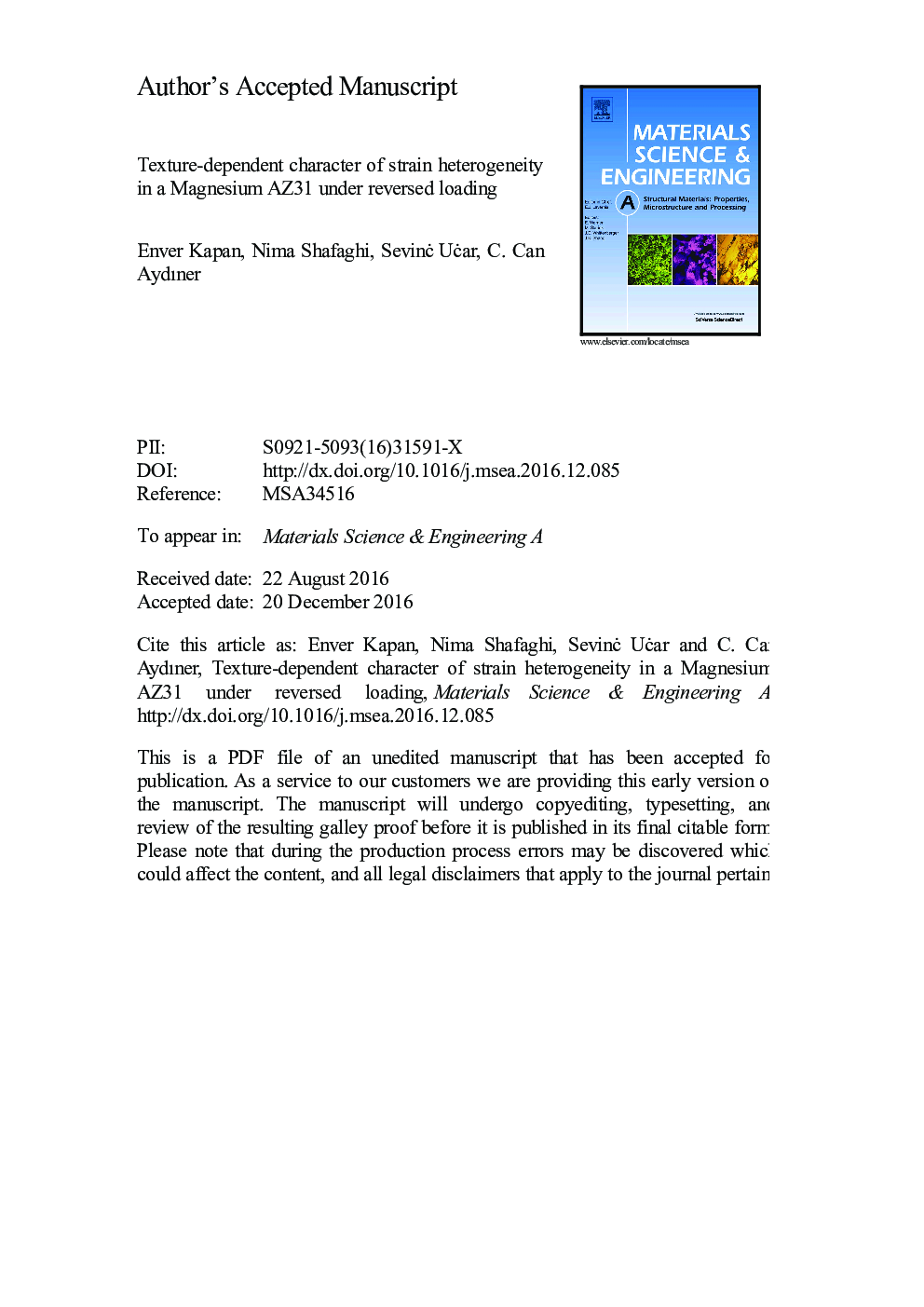| Article ID | Journal | Published Year | Pages | File Type |
|---|---|---|---|---|
| 5456359 | Materials Science and Engineering: A | 2017 | 15 Pages |
Abstract
Depending on operational micromechanisms and crystallographic texture, the innate strain localization at microstructural length scales of a polycrystal can spatially coordinate to induce macroscopic strain localization. A challenge for material performance and modeling, this behavior is observed in wrought Magnesium alloys when they deform with heavy tensile twinning. With in-situ, multi-surface image correlation, a compression-tension experiment is implemented on samples with extrusion and rolling texture that have a consistent 11 µm grain size. While samples of both textures exhibit a clear twin plateau with close stress levels (90/99 MPa for rolled/extruded samples), the strain localization patterns are vastly different, both in terms of geometric structure and intensity. Rolled sample exhibits sharp shear banding structures with a fixed plane of shear. Extruded sample exhibits strain localization that is not in macroscopic ±45° shear form and much weaker in intensity (by about a factor of 2). Once the load is reversed and the tensile twin is deactivated, strain accommodation largely homogenizes for both textures during detwinning and subsequent high hardening stages.
Related Topics
Physical Sciences and Engineering
Materials Science
Materials Science (General)
Authors
Enver Kapan, Nima Shafaghi, Sevinc̣ Uc̣ar, C. Can Aydıner,
